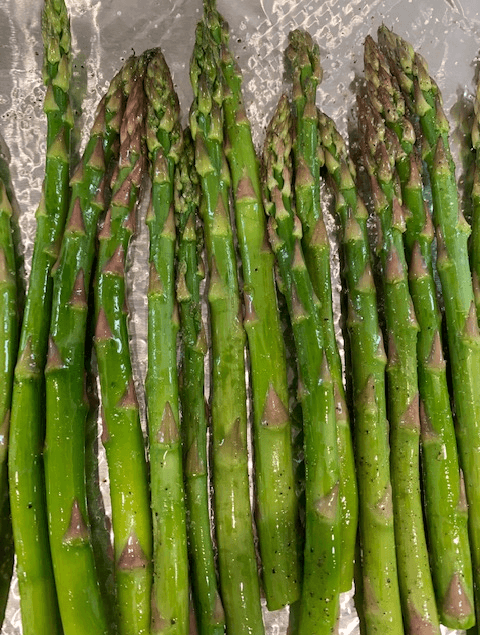
Roasted asparagus can be the most delicious of the vegetable kingdom, especially as a side with crawfish cardinal.
However, it can also be one of the trickiest to get right. Poorly handled asparagus can turn out stringy, soggy, tough, woody, or limp. To make the most of this vegetable, it’s essential to choose and cook your spears with care. Keep in mind that asparagus is seasonal and not available in top quality year-round. Enjoy it at its peak, and follow these guidelines to avoid settling for poor quality spears.
How to Choose Asparagus
- Tip color should be a hearty green or slightly purple. If faded and pale colored, pass and wait for another day.
- Choose firm spears. Do not buy them if they sag and bend under their own weight when held horizontally.
- Cook them the same day. Asparagus does not keep well nor for long. If you must store it, trim the ends, place them in water like bamboo and store in the fridge covered until the next day.
- Medium size spears with tight tips are best. Tiny, thin spears will always disappoint.
- The best have moist, plump ends. If they are dry or cracking they are not fresh and will be woody or stringy.
- Take a deep breath and smell them. Any musty odor means they are past their prime.
To Peel or Not to Peel?
I’ve tried both methods, and in my experience, peeling doesn’t make much difference when it comes to avoiding stringy or woody asparagus. If the spears are tough, peeling won’t fix that—it’s simply the nature of the stalk. That said, if the spears are particularly thick, or you’re just curious, go for it! It won’t hurt, but it does add extra work.
To Trim or Snap the Ends?
The ends of asparagus always need trimming; the question is how much. The common advice is to bend each spear until it snaps at its “natural breaking point.” While effective, this method often wastes more asparagus than necessary. Instead, I recommend a simpler approach: grab one stalk, hold it near the center and at the end, and perform a single bend to identify the trim point. Then, trim the entire bundle at that spot using a chef’s knife. I usually cut off about 1–2 inches—quick, efficient, and less wasteful.
The Bottom Line
Your success with asparagus starts with what you buy. High-quality, fresh spears are the key to great results. As my grandma used to say, “You can’t make a silk purse out of a sow’s ear.” Choose wisely!

And just one more thing…
A known heckler commented on a post, asking if I ever ate vegetables. For the record, this was the first post I wrote tagged “vegetable”. Yeah, I was surprised too.
Roasted Asparagus
Fresh asparagus spears, roasted in olive oil, dressed with balsamic vinegar and shaved parmesan
Ingredients
- One bunch fresh asparagus
- Extra virgin olive oil
- Coarse sea salt
- Fresh ground black pepper
- Balsamic vinegar
- Shaved parmesan
Instructions
- Preheat oven to 400
- Line a rimmed baking sheet with aluminum foil to aid cleanup
- Trim your spears
- Wash and dry them so the oil, salt and pepper will stick
- Place the prepped asparagus on the baking sheet in a single layer
- Drizzle olive oil, grind the pepper and add the salt to the spears and hand toss to ensure each spear is fully coated
- Roast for 12-15 minutes depending on the thickness of the spears until lightly browned and tender
- Remove and plate
- Drizzle balsamic vinegar onto the spears and add some shaved parmesan if desired

